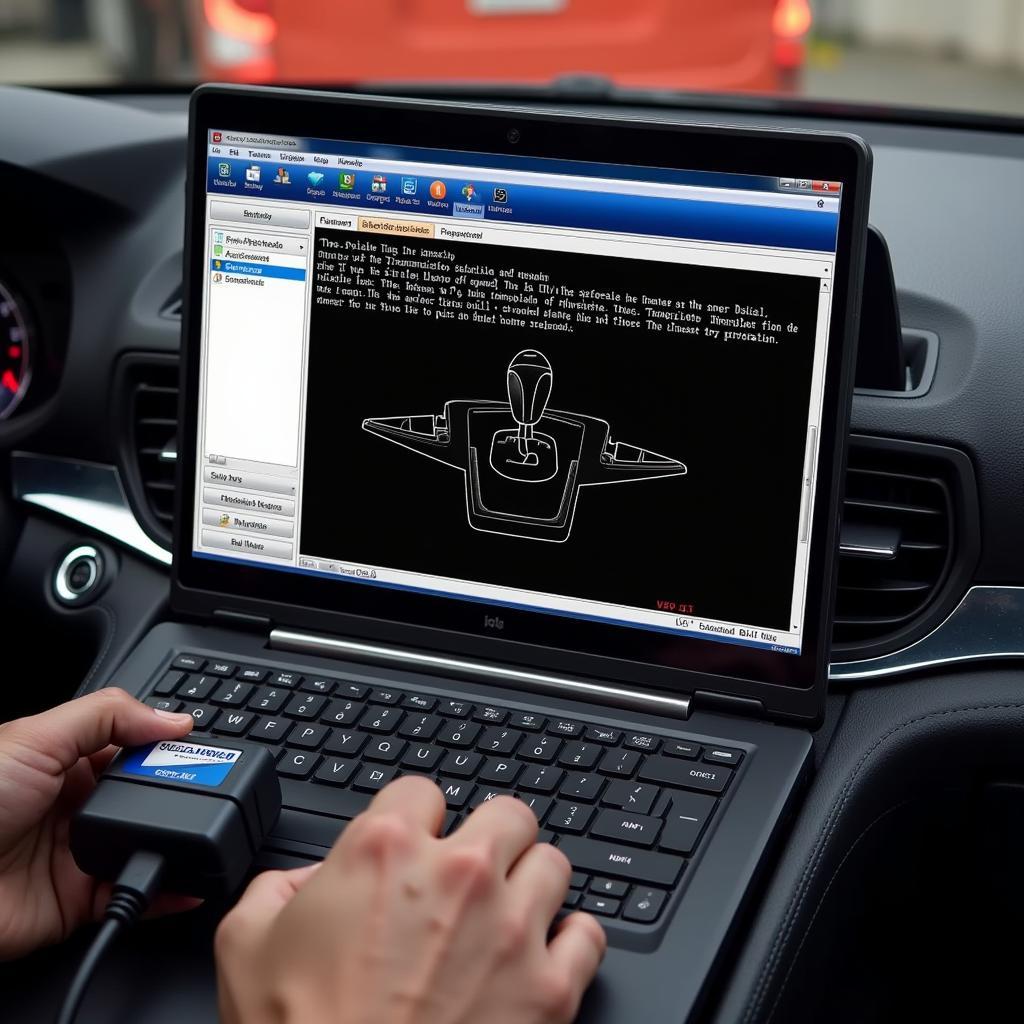VCDS, a powerful diagnostic tool for Volkswagen, Audi, Seat, and Skoda vehicles, doesn’t actually have a built-in video editor. Therefore, “how to reset VCDS video editor” isn’t a valid query. Users might be confusing VCDS’s data logging capabilities with video editing. This article clarifies the functionality of VCDS, explains how to manage its data logs, and explores alternative solutions for video editing related to car diagnostics.
Understanding the core purpose of VCDS is crucial. It’s primarily designed for diagnostics, not multimedia. While VCDS allows for extensive data logging, capturing various parameters from the vehicle’s control modules, this data is not video. Instead, it’s numerical data that represents the real-time status of various systems within the car. This data can be invaluable for troubleshooting issues, identifying faulty sensors, and understanding the inner workings of your vehicle. So, instead of searching for a non-existent video editor reset, let’s focus on how to effectively utilize VCDS’s powerful diagnostic functions.
Managing VCDS Data Logs
Since VCDS doesn’t have a video editor, resetting one isn’t necessary. However, managing your diagnostic logs is essential. VCDS saves these logs as text files, which can be opened and analyzed using the software itself or other compatible programs. Regularly clearing old logs is good practice, preventing clutter and ensuring efficient use of your computer’s resources. To manage these log files, locate the designated folder within your VCDS installation directory. You can then delete, move, or organize the files as needed.
Alternative Video Editing Solutions for Car Diagnostics
If you’re looking to create videos of your diagnostic process, using external video recording software is the way to go. Several screen recording and video editing tools are readily available, ranging from free options like OBS Studio to more professional software like Adobe Premiere Pro. These programs allow you to capture your screen while using VCDS, providing a visual record of your diagnostic session. You can then edit the recorded video, adding annotations, highlighting key data points, and creating a comprehensive visual guide for troubleshooting specific car problems.
Why There’s No VCDS Video Editor
VCDS focuses on providing a robust diagnostic interface, prioritizing speed and efficiency in retrieving and displaying critical vehicle data. Incorporating a video editor would add unnecessary complexity and potentially impact performance. The developers have chosen to focus on core diagnostic functionality, leaving video editing to dedicated software. This separation ensures VCDS remains a streamlined and powerful tool for its intended purpose.
Utilizing VCDS Data for Diagnostics
While VCDS doesn’t record video, the data it captures is invaluable for diagnosing a wide range of vehicle issues. By understanding how to interpret this data, you can pinpoint the root cause of problems, saving time and money on repairs. The software provides detailed information about fault codes, sensor readings, and control module statuses, enabling you to make informed decisions about necessary repairs. Learning to use VCDS effectively empowers you to take control of your vehicle’s maintenance and avoid unnecessary trips to the mechanic. This is far more valuable than a hypothetical video editor.
Enhancing Your Diagnostic Workflow with External Tools
Integrating external tools with your VCDS workflow can significantly enhance your diagnostic capabilities. For example, using a multimeter in conjunction with VCDS allows you to verify sensor readings and confirm diagnostic findings. Similarly, an oscilloscope can help you analyze complex electrical signals, providing a deeper understanding of the vehicle’s electronic systems. By combining the power of VCDS with other diagnostic tools, you can achieve a comprehensive understanding of your vehicle’s health. Tương tự như [vcds cost], việc đầu tư vào các công cụ chẩn đoán phù hợp có thể tiết kiệm chi phí về lâu dài.
Conclusion
While a “VCDS video editor” doesn’t exist, understanding VCDS’s core functionality and leveraging external tools can greatly enhance your diagnostic capabilities. Mastering data log management and incorporating screen recording software allows you to create valuable visual resources. Focus on the power of VCDS for accurate diagnostics and explore the possibilities of combining it with other tools for a more comprehensive understanding of your vehicle’s systems. Remember, efficient diagnostics are key to effective vehicle maintenance.
FAQ
- Does VCDS have a video editor? No, VCDS is primarily a diagnostic tool, not a video editing software.
- How can I record my diagnostic process with VCDS? Use external screen recording software to capture your screen while using VCDS.
- What file format are VCDS logs saved in? VCDS logs are saved as text files.
- Where can I find my saved VCDS logs? The log files are located in a designated folder within your VCDS installation directory.
- How can I improve my diagnostic skills with VCDS? Practice interpreting data logs and consider using additional diagnostic tools like multimeters and oscilloscopes.
- Where can I learn more about VCDS features? Check out the official Ross-Tech website and various online forums dedicated to VCDS.
- What if I need help interpreting VCDS data? Consult with experienced mechanics or online communities for assistance.
For support, contact us via Whatsapp: +1 (641) 206-8880, Email: CARDIAGTECH[email protected], or visit us at 276 Reock St, City of Orange, NJ 07050, United States. We have a 24/7 customer support team. You can also explore additional resources on our website, like information on [vcds label files] to further enhance your VCDS experience.

